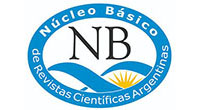Photography and Democratization
Kodak’s Hegemonic Construction
DOI:
https://doi.org/10.24215/23142502e030Keywords:
Photography, cultural imperialism, Kodak, hegemony, democratizationAbstract
This article proposes to denature and problematize the concept of democratization of the image in the history of photography through the analysis of the hegemonic construction and cultural penetration of the Eastman Kodak Company, towards the end of the 19th century and the beginning of the 20th. Based on theoretical-methodological approaches from cultural studies, sociology of culture and the history of photography —crossed by reformulations of classical Marxist theory— the company’s production model, its corporate policy and its marketing strategies, together with its publications and advertisements of that time can be observed.Downloads
References
Bañuelos, J., Pérez-Novelo, R. y Vega, E. (2012). Factores clave del auge y declive de Kodak: del paradigma analógico al digital. Razón y Palabra, (79). Recuperado de http://www.razonypalabra.org.mx/N/N79/V79/41_BanuelosPerezVega_M79.pdf
Barnes, F. W. (diciembre de 1910). Advertisement for the «At Home with the Kodak» booklet [Anuncio del folleto «En casa con la Kodak»]. Recuperado de https://collections.eastman.org/objects/312673/advertisement-for-the-at-home-with-the-kodak-booklet?ctx=e44eccb9-c92b-47f5-a79f-cfedf2bdd274&idx=16
Benjamin, W. [1936] (1989). La obra de arte en la época de su reproductibilidad técnica. En Discursos interrumpidos I (pp. 17-59). Ciudad Autónoma de Buenos Aires, Argentina: Taurus.
Berger, J. [1972] (2015). Para entender la fotografía. Barcelona, España: Gustavo Gili.
Conserve en un álbum Kodak. (13 de mayo 1916). Caras y Caretas, (919), 25.
Eastman Kodak Company. (1896). Kodak advertisement for the Bulls-Eye Camera [Anuncio de Kodak para la cámara Bulls-Eye]. Recuperado de https://collections.eastman.org/objects/550073/kodak-advertisement-for-the-bullseye-camera?ctx=d98feba5-f97a-4d26-aa9f-3e5fcdb7ff52&idx=579
Eastman Kodak Company. (1900). Advertisement for Kodak photography [Anuncio de fotografía Kodak]. Recuperado de https://collections.eastman.org/objects/550278/advertisement-for-kodak-photography?ctx=add0b2a6-cf7e-4a15-9495-fb789cd02e40&idx=66
Eastman Kodak Company. (1903). Advertisement for the Kodak system of photography featuring the Kodak Girl [Anuncio del sistema de fotografía Kodak con la Kodak Girl]. Recuperado de https://collections.eastman.org/objects/335146/advertisement-for-the-kodak-system-of-photography-featuring?ctx=0a9e4373-bbfe-4e35-a33f-0dca469c0741&idx=95
Eastman Kodak Company. (1910). Advertisement for Kodak photography [Anuncio de fotografía Kodak]. Recuperado de https://collections.eastman.org/objects/574563/advertisement-for-kodak-photography?ctx=2db8a455-beec-4b4b-9cc7-e8cee7e67976&idx=142
Eastman Kodak Company. (1916a). Advertisement for Pocket Kodak cameras [Anuncio de cámaras Pocket Kodak]. Recuperado de https://collections.eastman.org/objects/574489/advertisement-for-pocket-kodak-cameras?ctx=15134710-606f-4005-aaac-261338cdfe49&idx=213
Eastman Kodak Company. (1916b). Advertisement for Kodak photography [Anuncio de fotografía Kodak]. Recuperado de https://collections.eastman.org/objects/574498/advertisement-for-kodak-photography?ctx=ddd01f59-4b90-435f-bb63-22afef83c3f1&idx=77
Eastman Kodak Company. (1918). Advertisement for the Kodak Album [Anuncio del álbum Kodak]. Recuperado de https://collections.eastman.org/objects/335242/advertisement-for-the-kodak-album?ctx=18f9d115-03c5-49d9-af28-cdac06c938ad&idx=1562
Eastman Museum. (s. f.). Collections. Recuperado de https://www.eastman.org/collections
Hall, S. [1983] (1998). El problema de la ideología: marxismo sin garantías. DOXA, 9(18), 3-16.
Hobsbawm, E. (2018). La Era del Imperio, 1875-1914. Ciudad Autónoma de Buenos Aires, Argentina: Crítica.
La Kodak en el hogar. (22 de septiembre 1917). Caras yCaretas, (990), 90.
Lleve una Kodak consigo. (11 de marzo 1916). Caras y Caretas, (910), 30.
McCullough, M. (s. f.). Early Kodak Advertising and the Democratization of Photography: You Press the Button - We Do the Rest [Los primeros anuncios Kodak y la democratización de la fotografía: usted presiona el botón, nosotros hacemos el resto]. Recuperado de www.academia.edu/7814063/Early_Kodak_Advertising_and_the_Democratization_of_Photography_You_Press_the_Button_We_Do_the_Rest
Our Advertising. (julio de 1920). The Kodak Magazine, 1(1), 16-17. Recuperado de https://archive.org/details/kodakmagazine01eastuoft/page/16
Pretelin Ríos, C. (2010). «Usted aprieta el botón, nosotros hacemos el resto». Anuncios de cámaras fotográficas Kodak 1888-1910 (Tesis de maestría). Universidad Nacional Autónoma de México, Ciudad de México, México.
Pretelin Ríos, C. (2016). «Let Kodak Keep the Story»: anuncios de cámaras y productos fotográficos Kodak 1920-1940 (Tesis de doctorado). Recuperado de http://132.248.9.195/ptd2016/abril/0743076/Index.html
Tagg, J. (2005). El peso de la representación. Ensayos sobre fotografías e historias. Barcelona, España: Gustavo Gili.
Una Kodak para las excursiones. (17 de noviembre 1917). Caras y Caretas, (998), 67.
Williams, R. (1997). Marxismo y literatura. Barcelona, España: Península.
Downloads
Published
How to Cite
Issue
Section
License
According to these terms, the material can be copied and redistributed by any means or in any format as long as a) the author and original source of the publication are quoted (magazine and URL of the work), access to the license is provided and whether changes have been made is mentioned; and b) the material is not used for commercial purposes.
The cession of non-exclusive rights means that after the publication (post print) in Boletín de Arte the authors can publish their work in any language, means and format; in such cases it must be mentioned that the material was originally published in this magazine.
Such cession also means the authorization of the authors for the work to be collected by SEDICI, the institutional archive of the National University of La Plata, and to be spread in the databases that the editorial team considers appropriate to increase the visibility of the publication and its authors.
Moreover, the magazine encourages the authors to deposit their productions in other institutional and thematic archives under the principle that offering the society the scientific and academic production without any restrictions contributes to a greater exchange of the global knowledge.
































